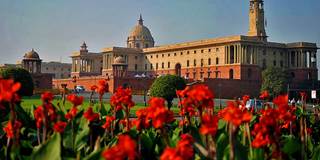Thanks to India’s parliamentary system, inherited from the British, the country holds elections in one or more of its 29 state assemblies every six months or so. That gives the leadership in New Delhi little opportunity to leave campaigning behind and focus on governance.
NEW DELHI – India’s parliamentary system, inherited from the British, is rife with ineffiencies. By the logic of Westminster, you elect a legislature to form the executive, and when the executive does not command a secure majority in the legislative assembly, the government falls, triggering fresh elections. The result is a vote in some or other of India’s 29 state assemblies every six months or so, each one acting as a sort of referendum on the government in New Delhi. In short, India’s freewheeling multi-party democracy has become one of perennial plebiscite.
India’s latest round of elections included five state assemblies. Prime Minister Narendra Modi’s ruling Bharatiya Janata Party (BJP) prevailed in Uttar Pradesh – India’s largest state, which is home to more than 200 million people and has produced seven of 15 prime ministers – and in neighboring Uttarakhand. The main opposition party, the Indian National Congress, triumphed in the northwestern state of Punjab and won pluralities in Goa and Manipur (though the BJP formed governments in the latter two states anyway, by assembling coalitions to ensure legislative majorities).
It looks like a mixed result. But India’s national politics has long been skewed toward the Hindi-speaking northern heartland, and Uttar Pradesh has far more voters than the other four states combined. So the results have been hailed as a victory for the BJP, affirming Modi’s popularity and vindicating his leadership – including of the campaign itself.

NEW DELHI – India’s parliamentary system, inherited from the British, is rife with ineffiencies. By the logic of Westminster, you elect a legislature to form the executive, and when the executive does not command a secure majority in the legislative assembly, the government falls, triggering fresh elections. The result is a vote in some or other of India’s 29 state assemblies every six months or so, each one acting as a sort of referendum on the government in New Delhi. In short, India’s freewheeling multi-party democracy has become one of perennial plebiscite.
India’s latest round of elections included five state assemblies. Prime Minister Narendra Modi’s ruling Bharatiya Janata Party (BJP) prevailed in Uttar Pradesh – India’s largest state, which is home to more than 200 million people and has produced seven of 15 prime ministers – and in neighboring Uttarakhand. The main opposition party, the Indian National Congress, triumphed in the northwestern state of Punjab and won pluralities in Goa and Manipur (though the BJP formed governments in the latter two states anyway, by assembling coalitions to ensure legislative majorities).
It looks like a mixed result. But India’s national politics has long been skewed toward the Hindi-speaking northern heartland, and Uttar Pradesh has far more voters than the other four states combined. So the results have been hailed as a victory for the BJP, affirming Modi’s popularity and vindicating his leadership – including of the campaign itself.